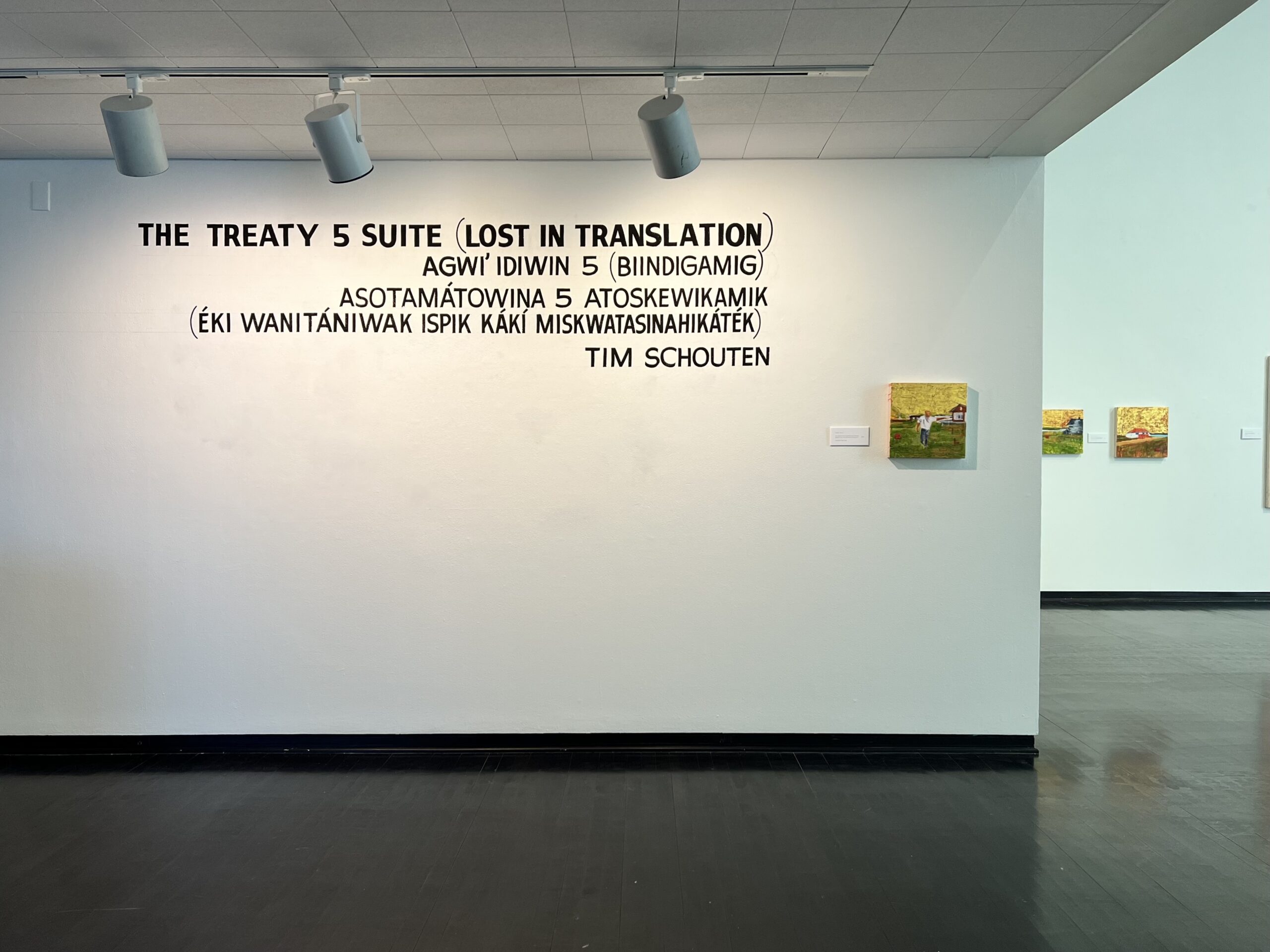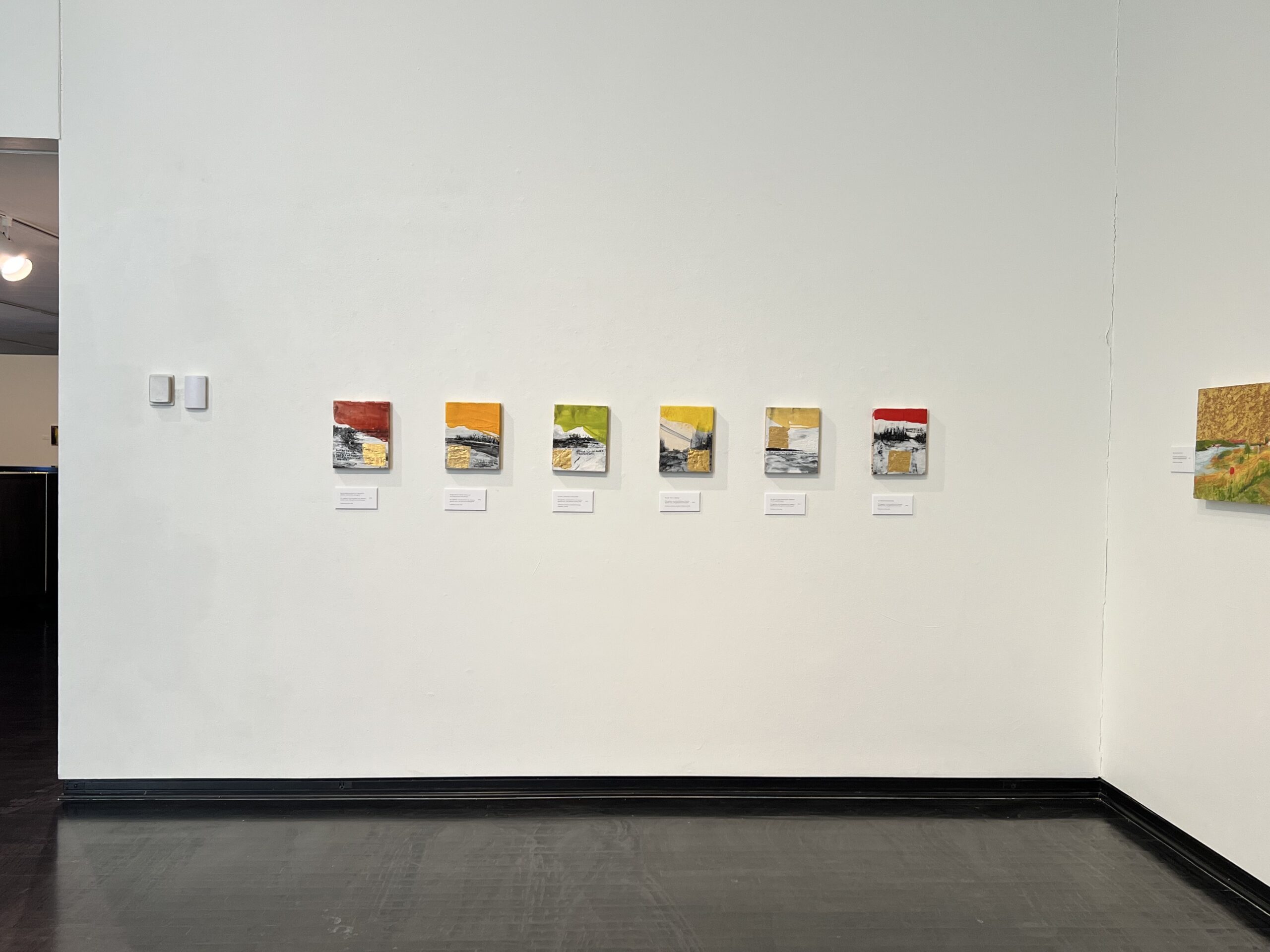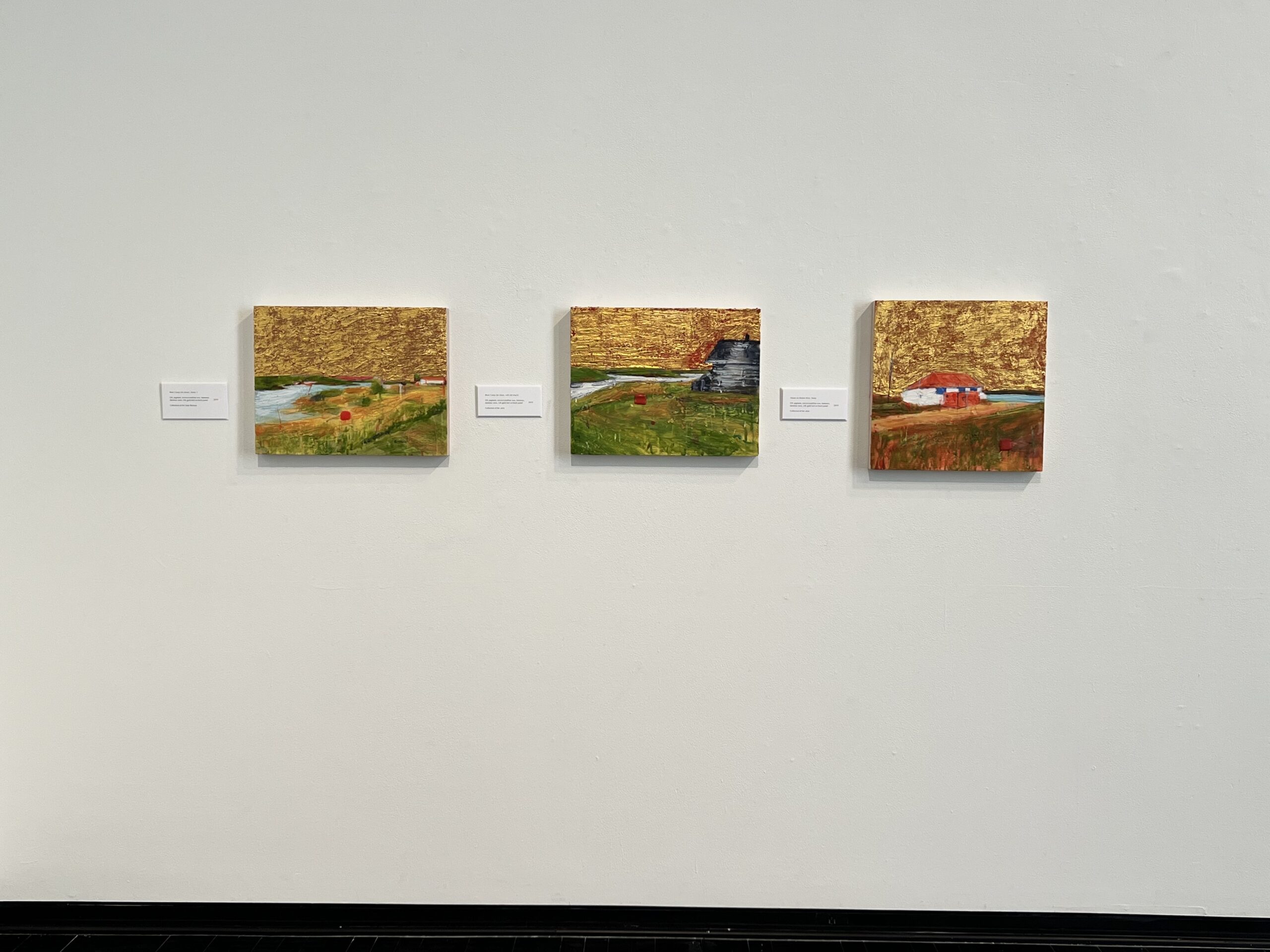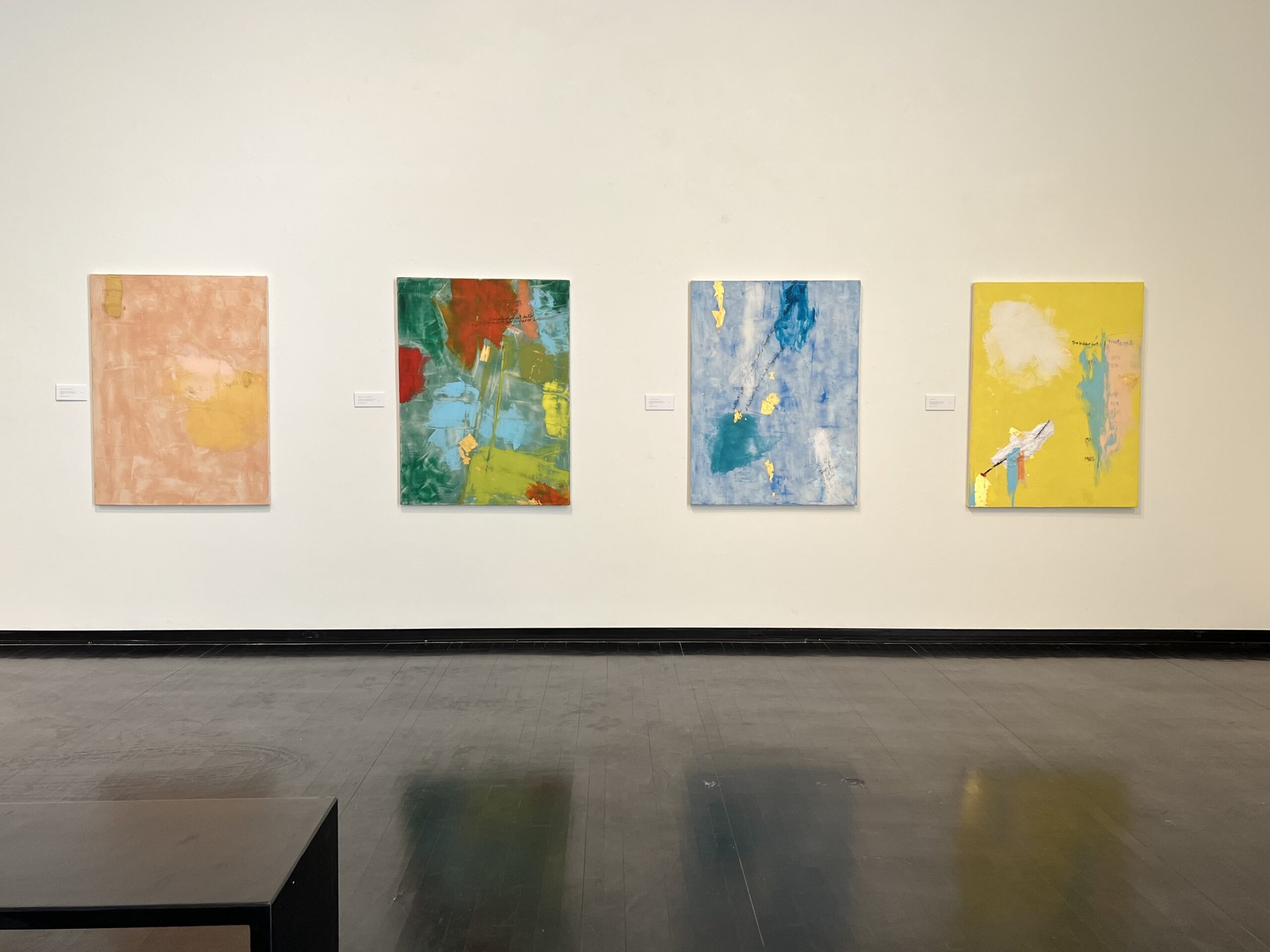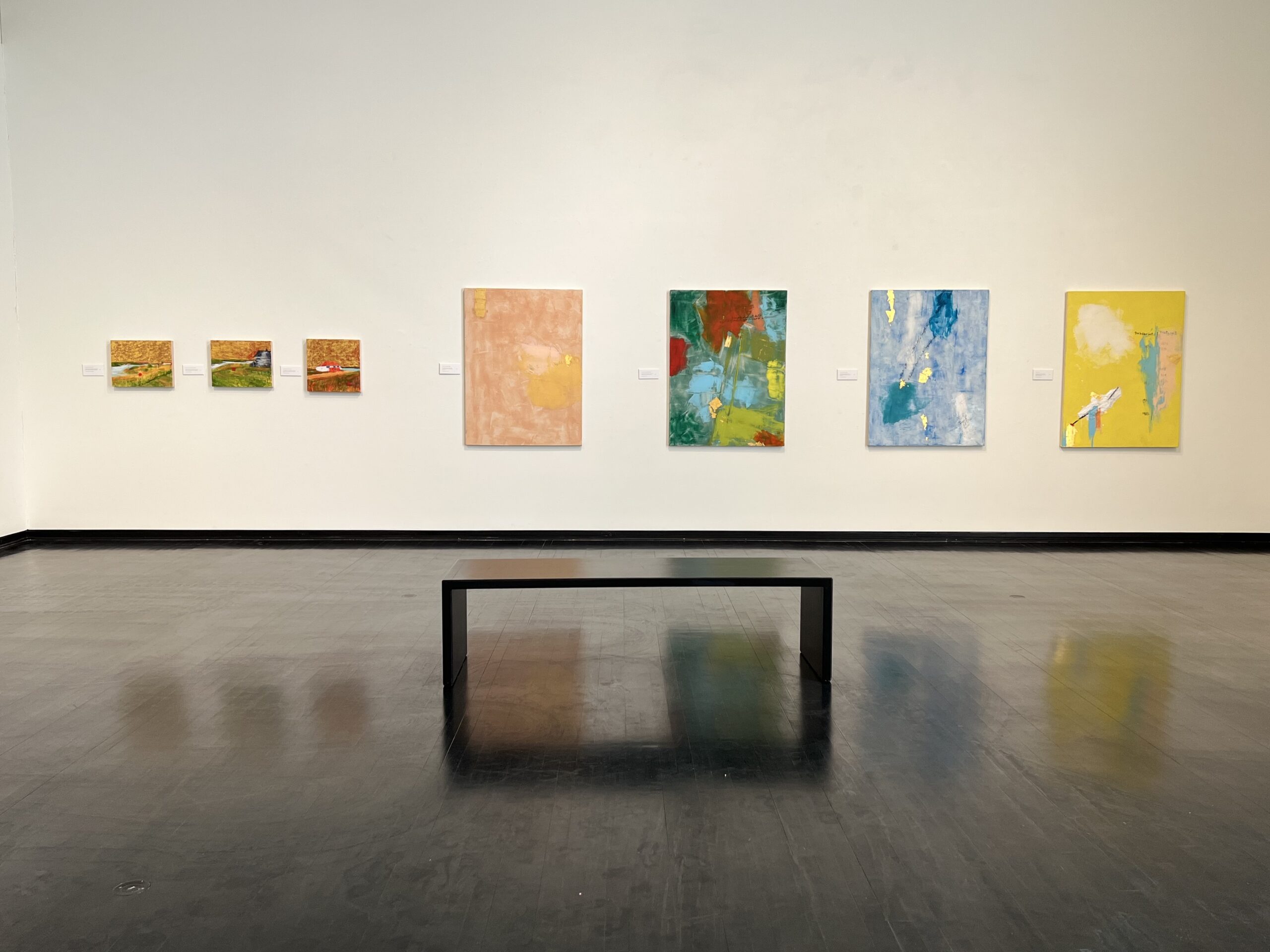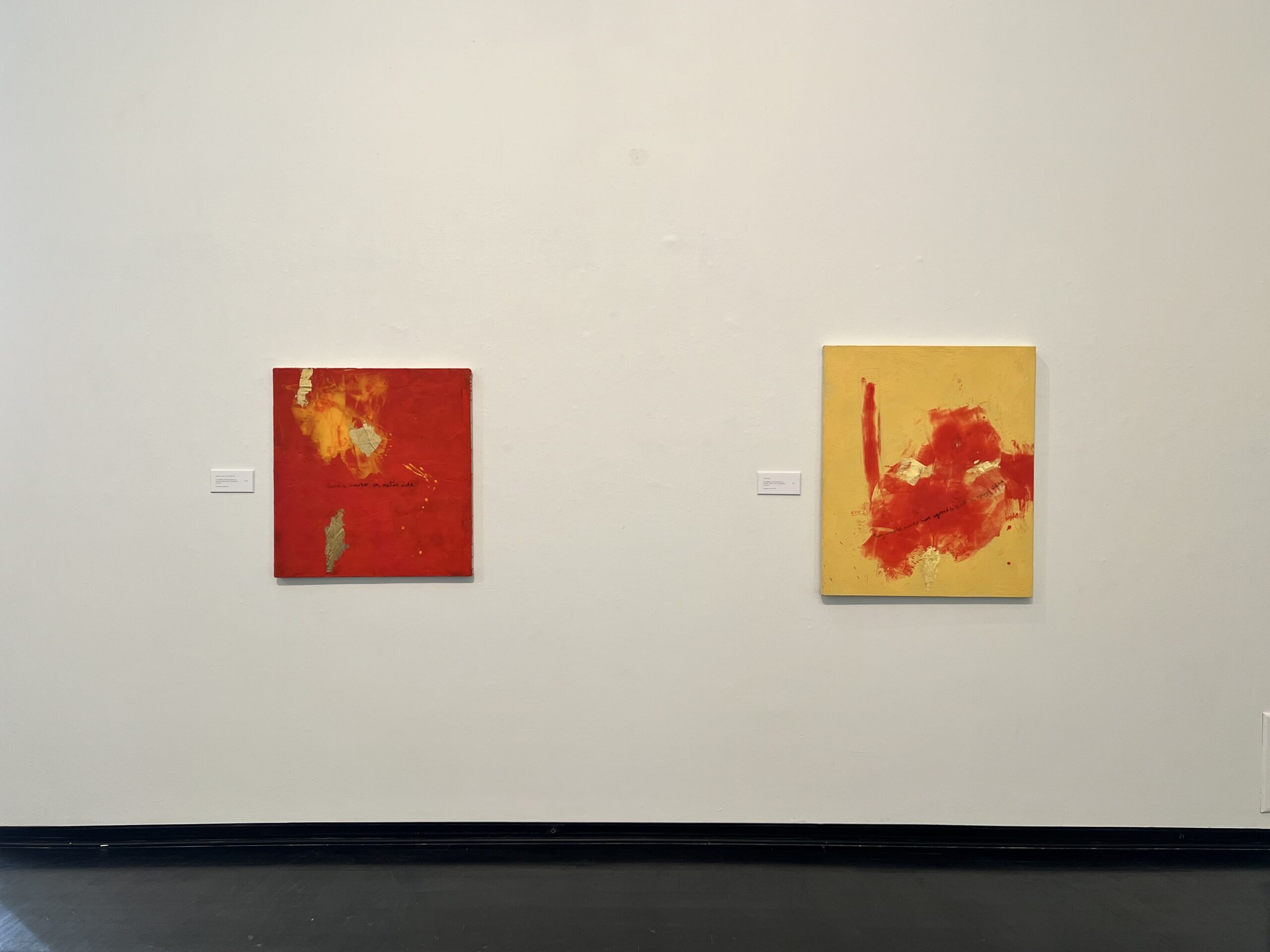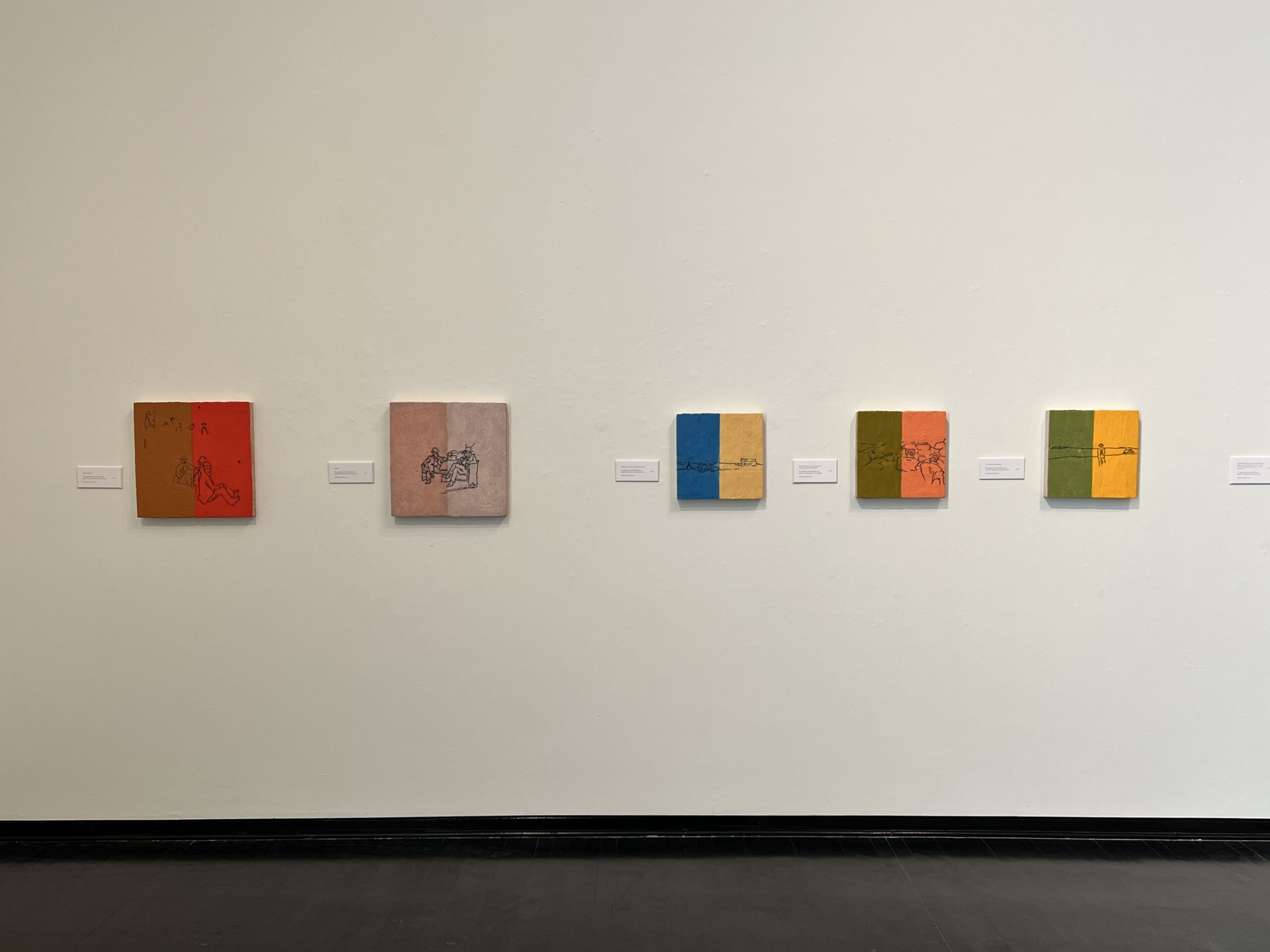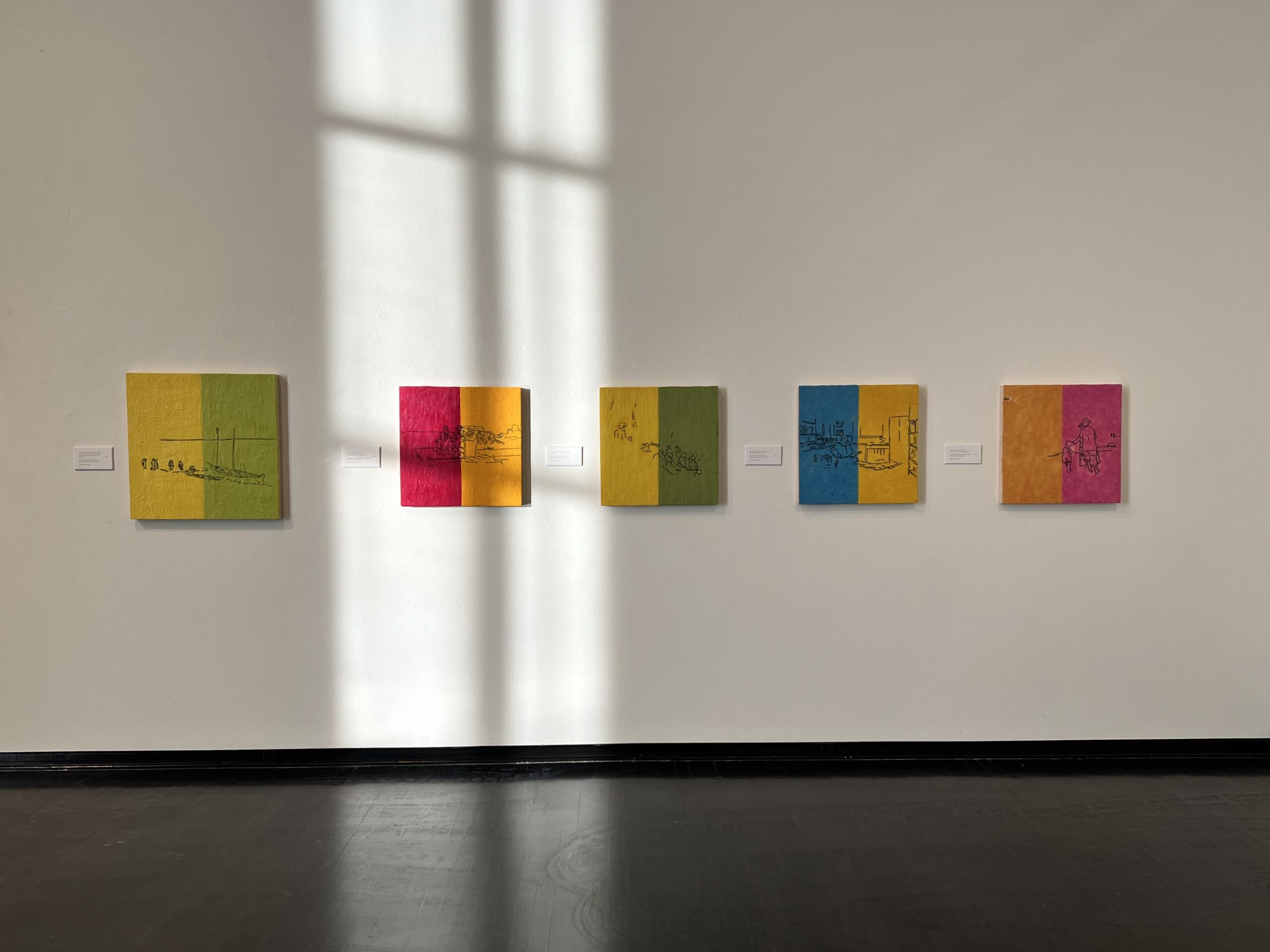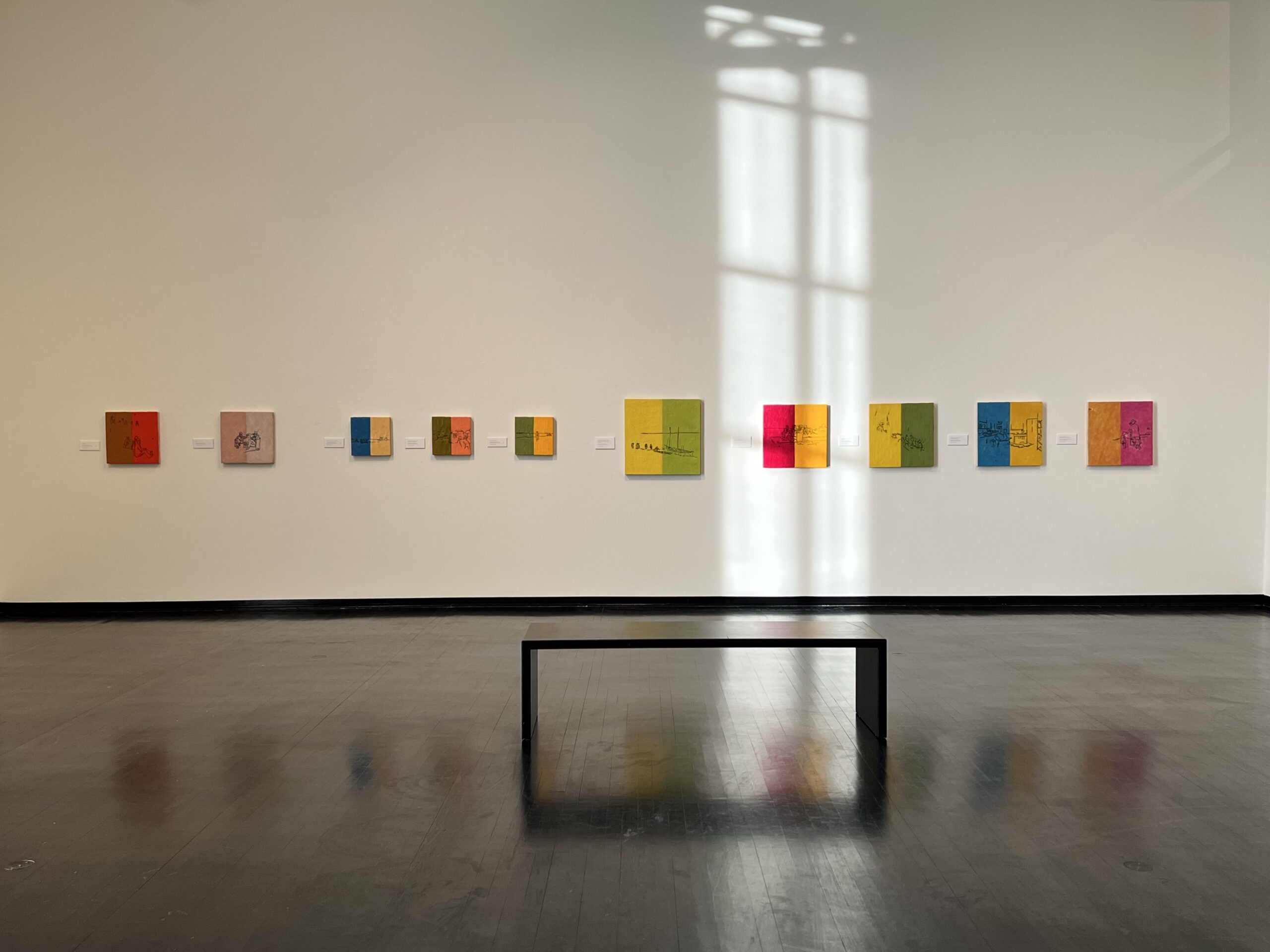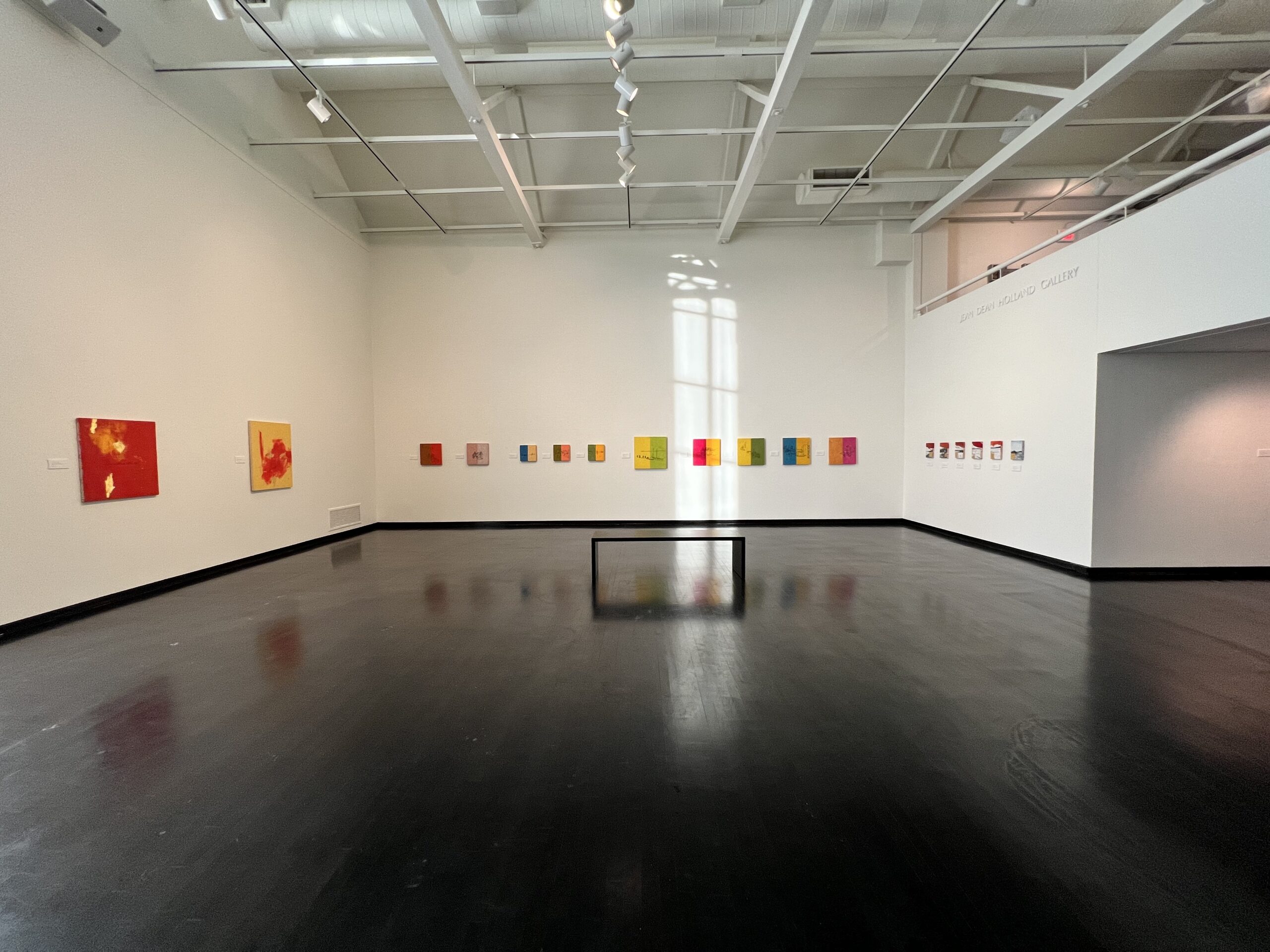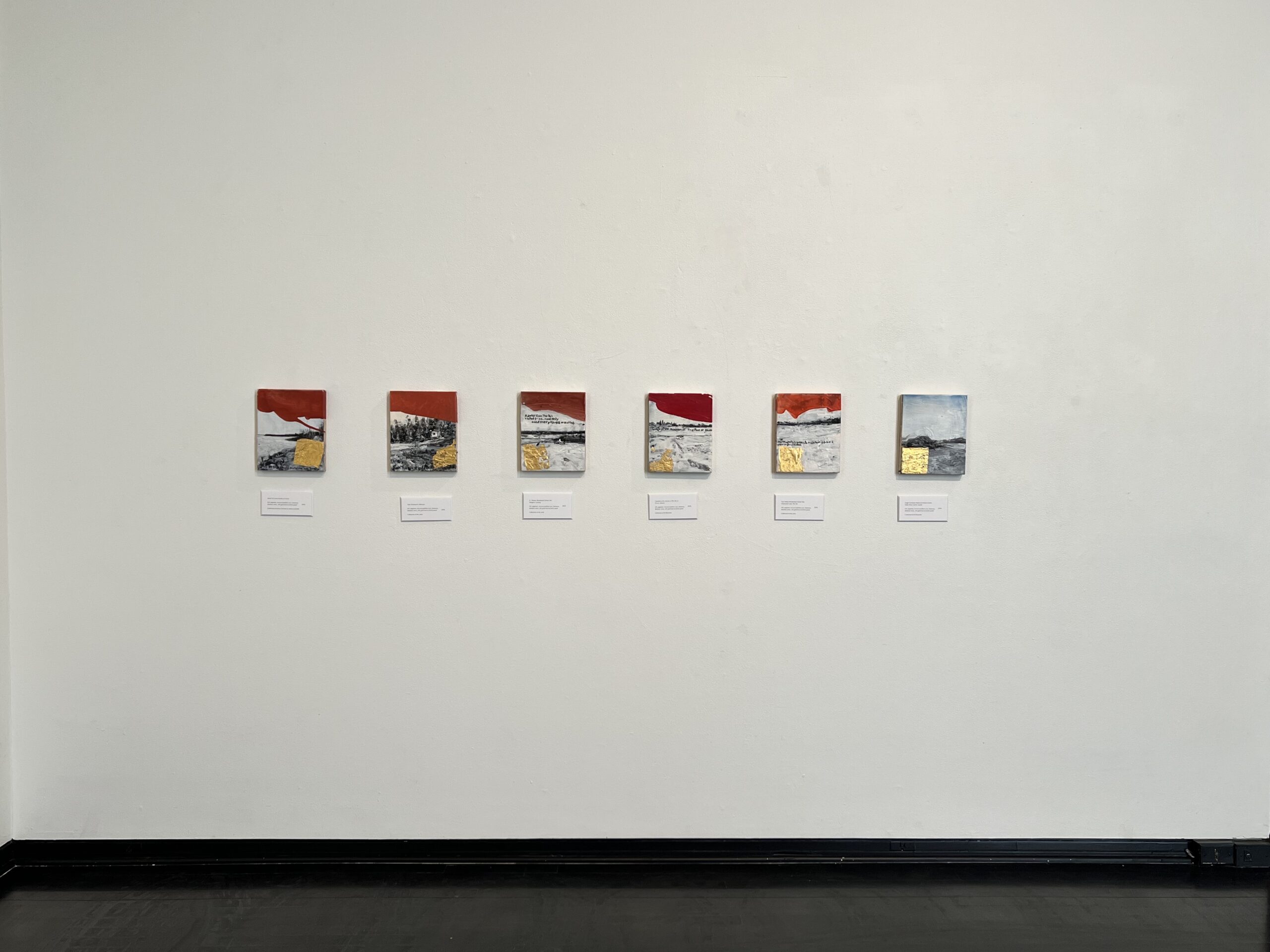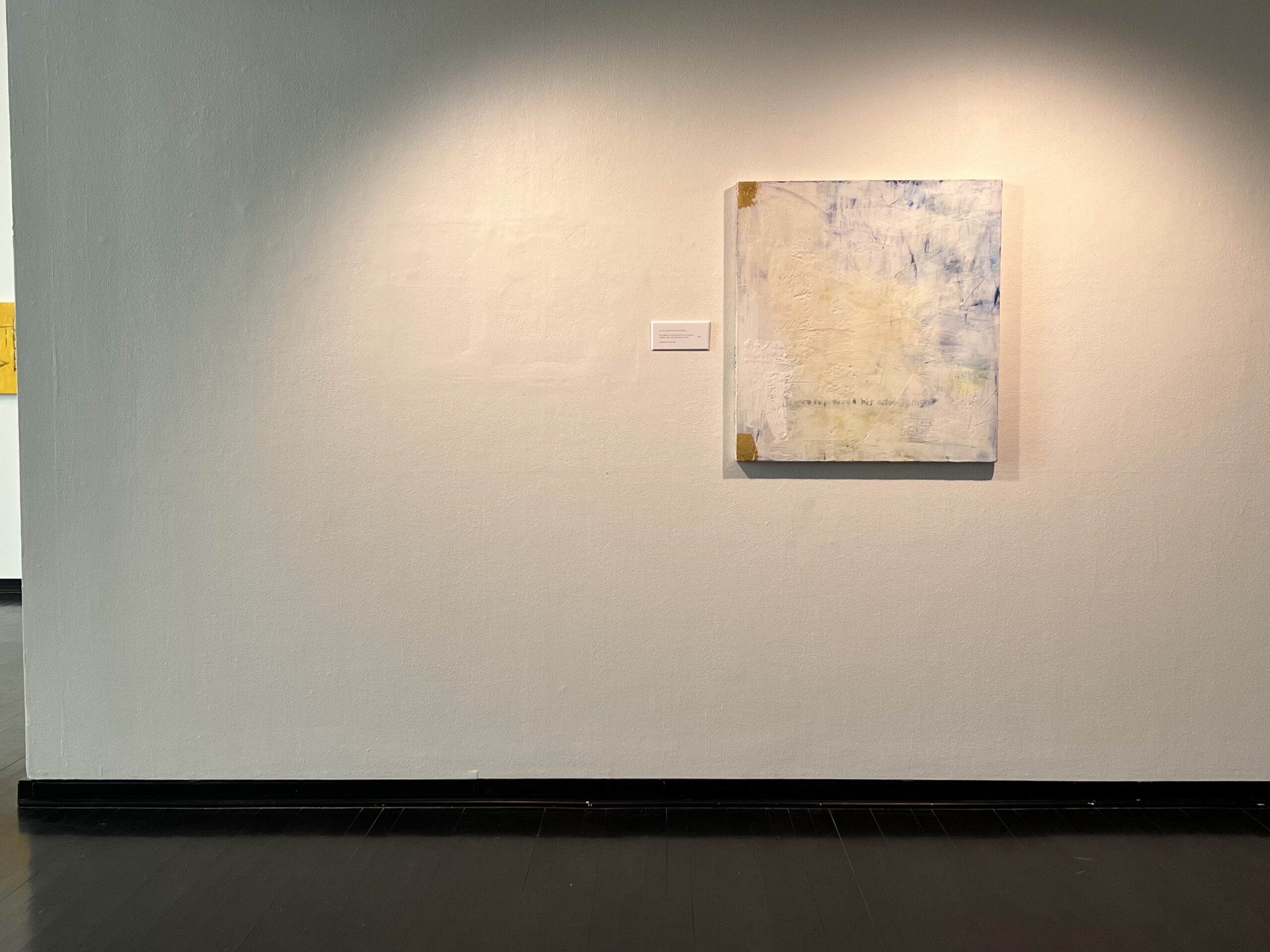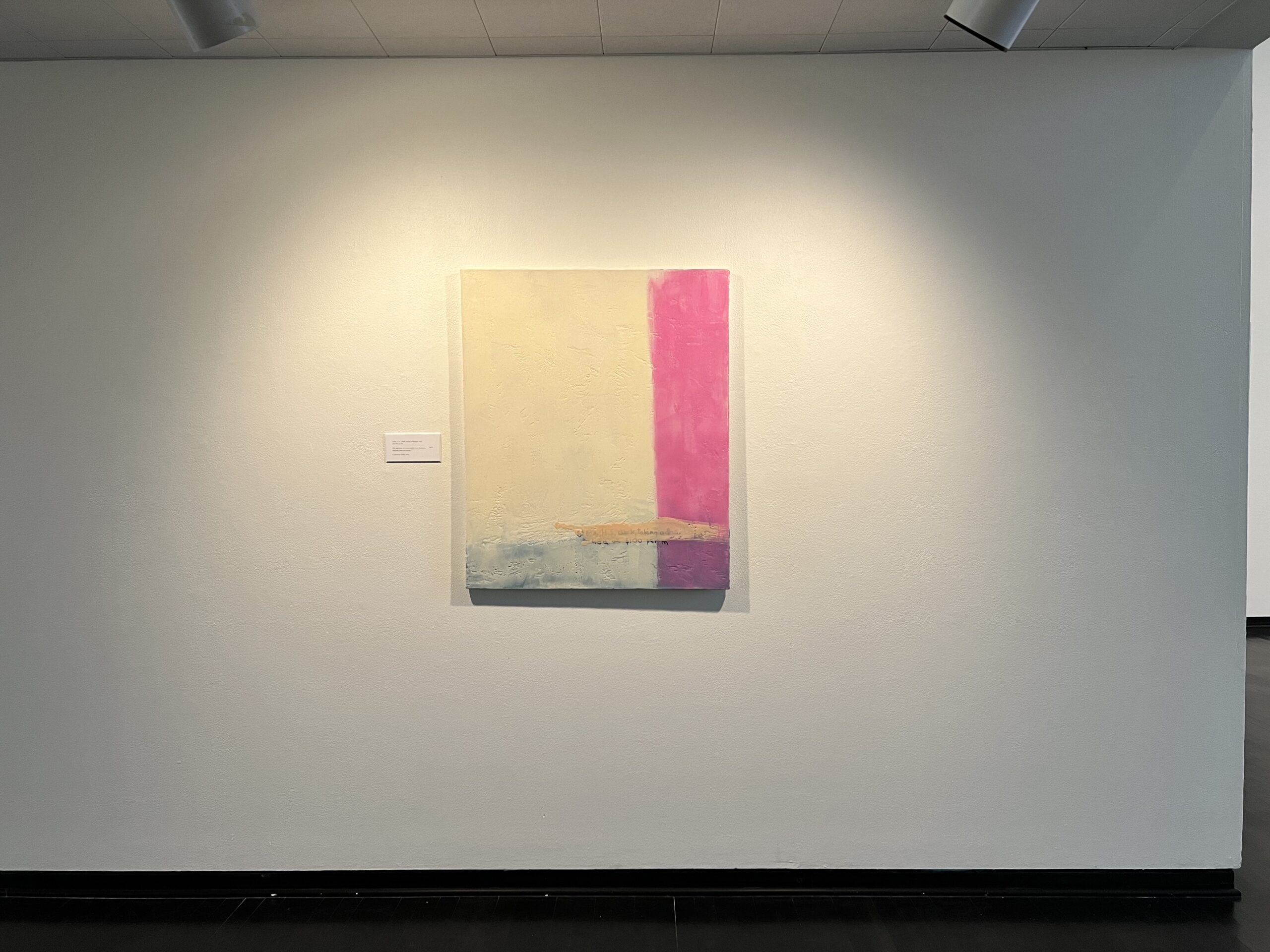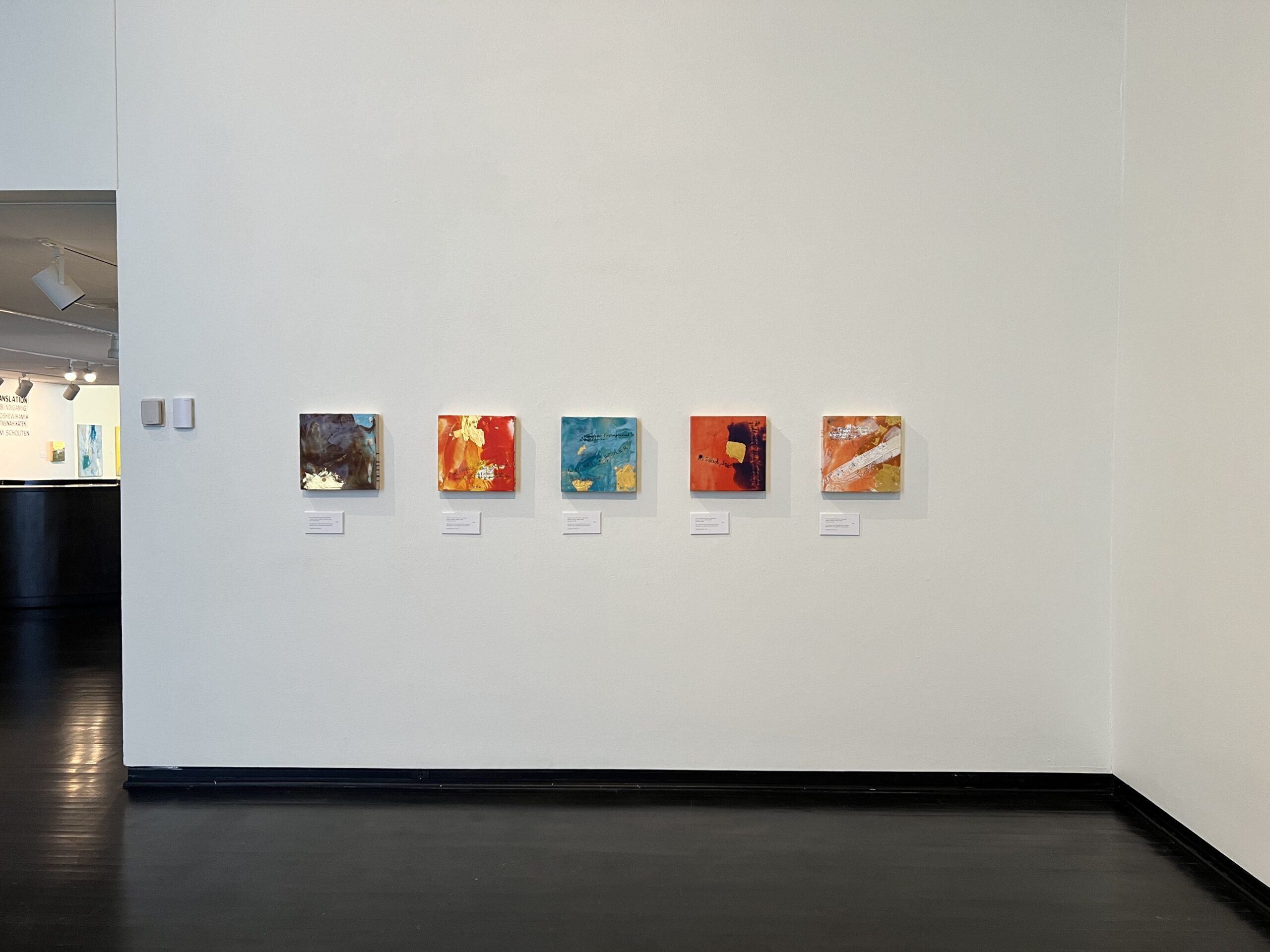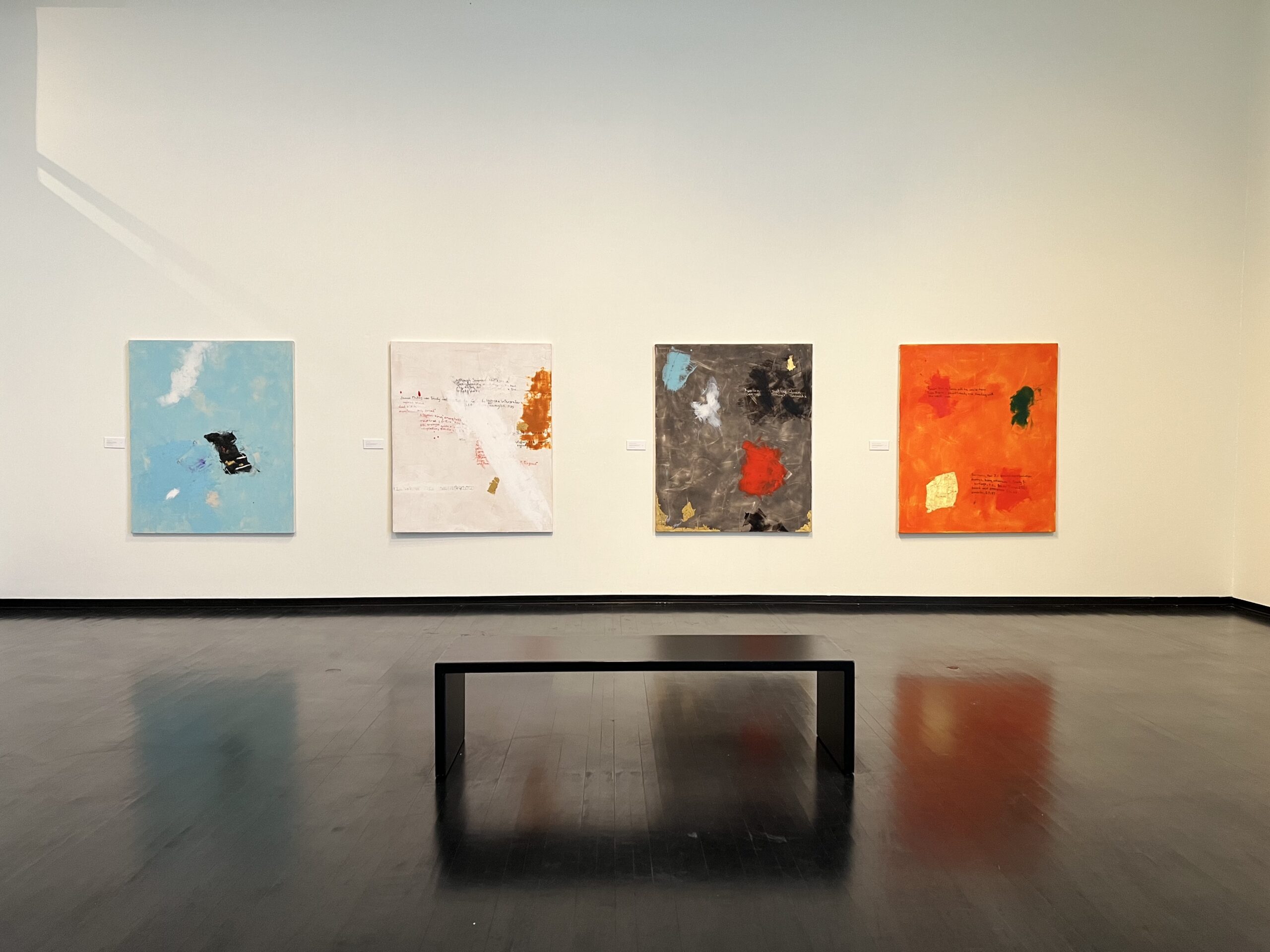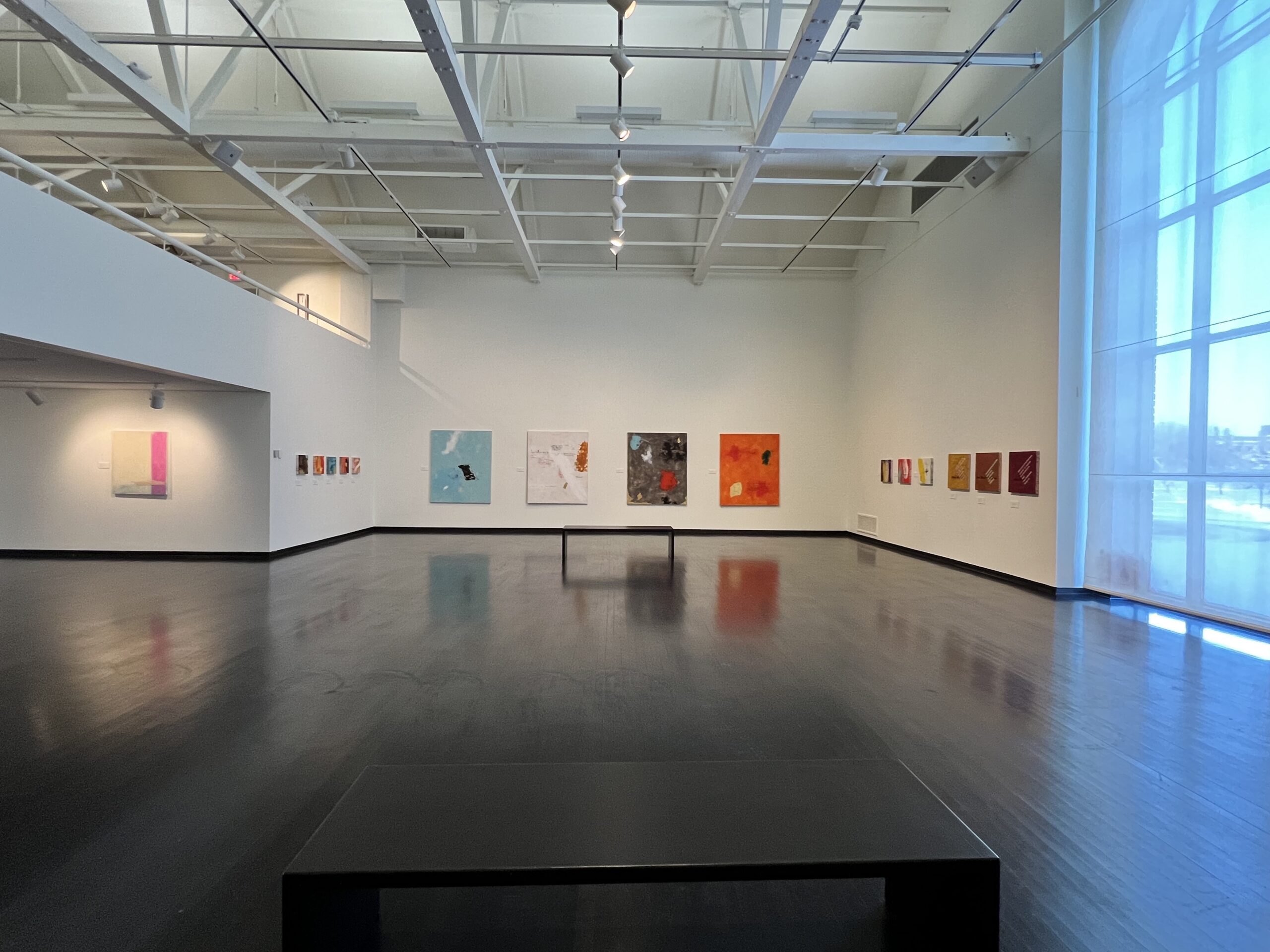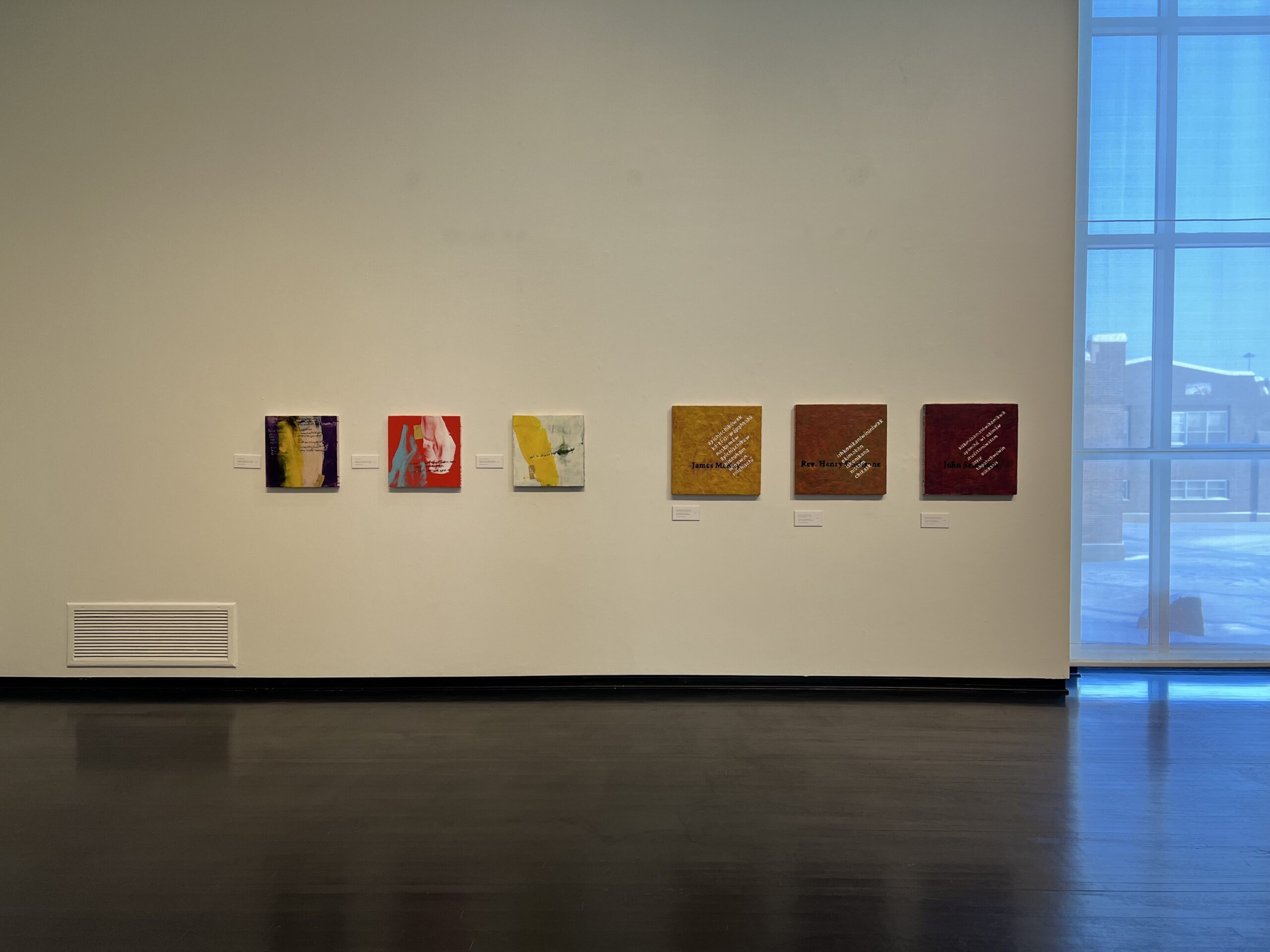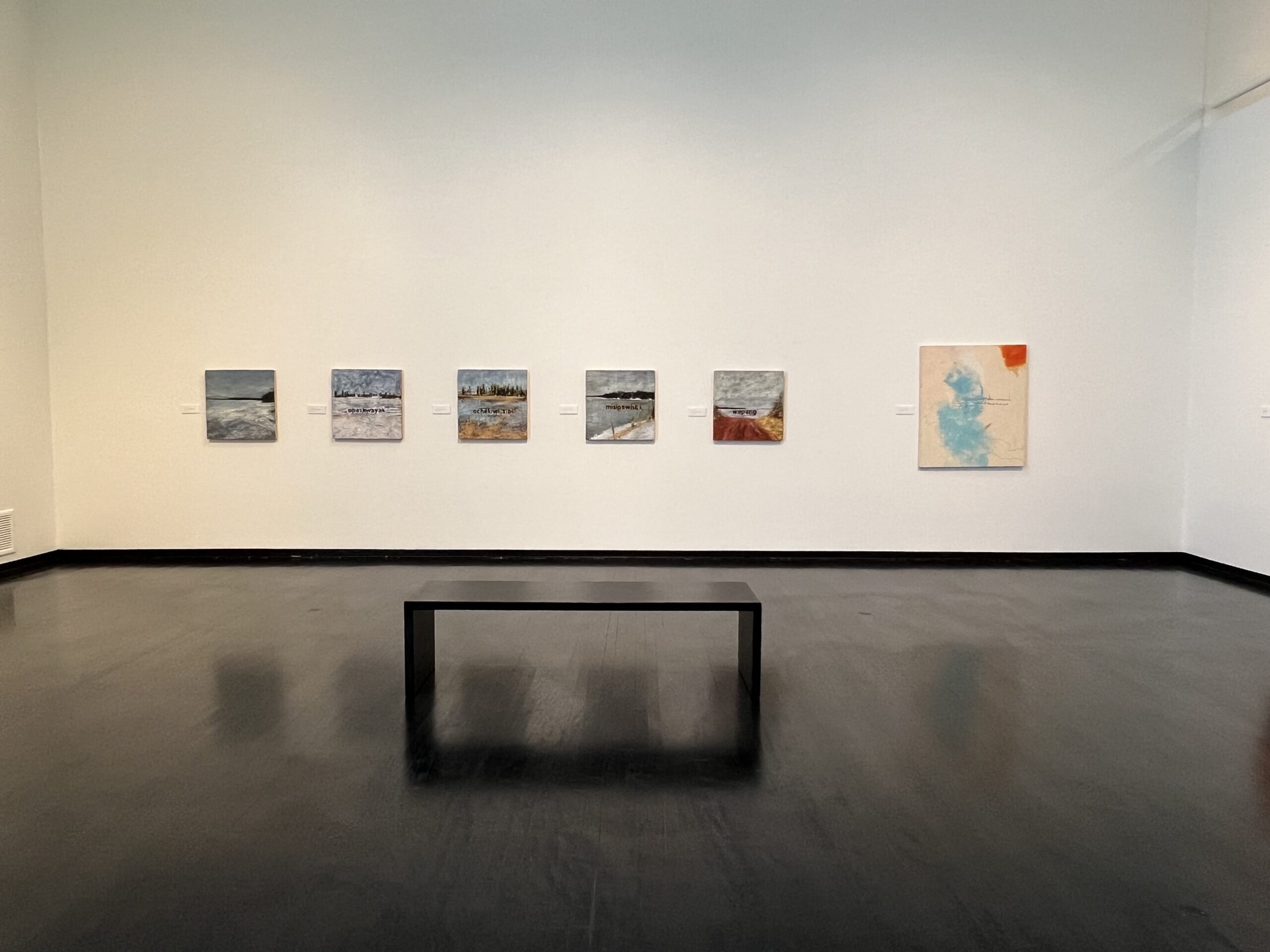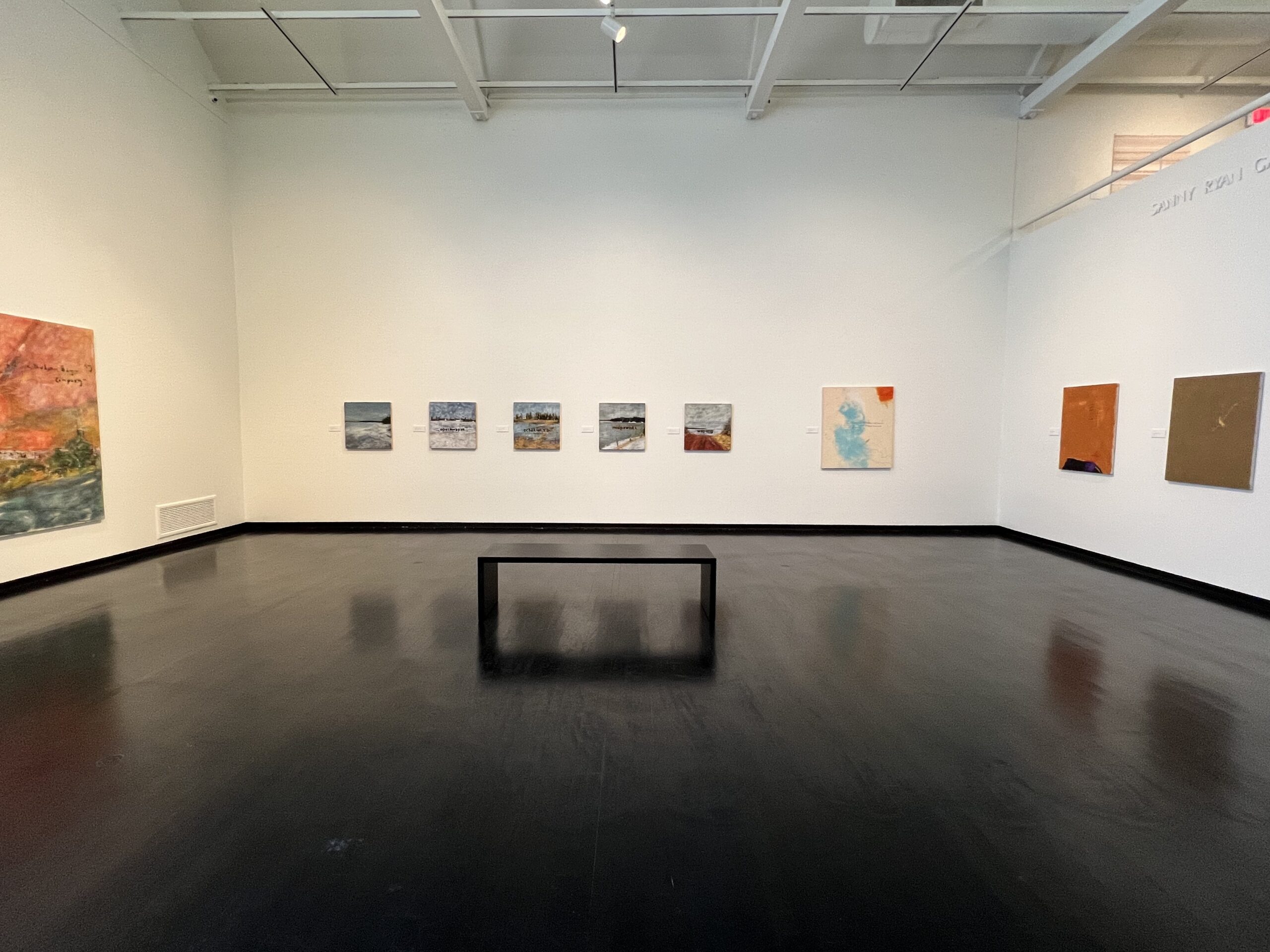December 8 – March 26, 2023
Opening Reception is Thursday, December 8, at 5:30pm.
Tim Schouten will lead an informal gallery talk.
Schouten is a Canadian artist of settler ancestry, based in Winnipeg, Manitoba. Although he has exhibited in numerous group exhibitions at the Museum, The Treaty 5 Suite (Lost In Translation), will be his first solo exhibition here. Schouten’s artistic practice probes the edges of history, language and landscape and the works in this show reflect on the social, economic, and colonial implications of a treaty signed in 1875 by the British Crown representing Canada, and Cree, Ojibwa, and Dene peoples in Canada’s far North.
The exhibition includes landscape, text-based, and abstract works delving into language differences during treaty negotiations, and the government officials who acted as translators and interpreters during those negotiations. Sixty-five encaustic paintings on panel and canvas, created in the last 5 years. Many of the works incorporate 24K gold leaf as a signal to the value of the lands treated and of the treaty relationship itself, and to the skewed ethics underpinning the treaty structure.
Artist Statement – October 7, 2004
The Treaty Suites is a project to research and photograph the exact locations of the signings of each of the eleven “numbered” Treaties between Canada and First Nations and to create suites of 10 to 20 paintings related to each Treaty. It is a further extension of the Treaty Lands project begun six years ago.
After 1870, the treaty-making process was hastened or perhaps even impelled by the impending construction of the Trans-Canada Railroad and the rapid influx of European settlers west of the Red River Settlement following the creation of the Province of Manitoba. Treaties No. 1 & No. 2 were signed two weeks apart in the summer of 1871. Treaty No. 1 was signed at the Hudson Bay Company Post at Lower Fort Garry (the Stone Fort) near the mouth of the Red River. Treaty 2 was signed at Manitoba House, also an HBC Post, near The Narrows of Lake Manitoba. Over a thousand Aboriginal people gathered at the Stone Fort to participate in the week-long Treaty 1 negotiations. Several hundred gathered two weeks later to sign Treaty 2 – apparently a less complicated negotiation.
The Treaty 1 Suite comprises 18 paintings made from photos taken at the Stone Fort (now rebuilt as a historic site), the Peguis First Nation and my studio outside Winnipeg. The Peguis Reserve was initially created within Treaty 1 territory but was moved north into Treaty 2 territory when additional land was desired to accommodate the growing town of Selkirk. My studio is clearly within the boundaries defined by Treaty 1.
Manitoba House was recreated on it’s original site on the shore of Lake Manitoba in 1974 by a Métis group, but that recreation has itself now fallen to ruin. The second series in this project, The Treaty 2 Suite (Where IS Treaty Land?), is based on photos taken around the Post, around the Ebb and Flow First Nation and along the Little Saskatchewan and Assiniboine Rivers near Brandon on the boundary between Treaty 1 and Treaty 2 territories,
The Treaty 3 Suite (Outside Promises) is next. Treaty No. 3 was signed in 1873 at the NW Angle of the Lake of the Woods. All I currently have to go on regarding the location of the signing is a snippet of text that I found on the Internet, “…treaty was actually signed on the American side of the inlet at Harrison Creek”. I will make further inquiries and drive to the NW Angle to take initial photos next week. Treaty 4 was signed at Fort Qu’Appelle and three other locations with different groups in what is now Saskatchewan in 1874. The westward march of the treaty-making process foregrounds nicely the agenda of the Canadian Government but also uncovers in part, the motives driving the desire for Treaty amongst Aboriginals. It feels almost like Treaty 3 was signed to cover territory east of Treaty 1 almost as if Canada wanted to makes sure she had her ass covered as she began construction of the railway.
It seems impossible to speak about the land entirely outside of political context. In most cases my paintings are based on photos of rather unspectacular locales. What the land is and how it holds meaning are things I try to brush up against in my painting. I am concerned with the idea and value of “place” and the idea that history can have a felt presence in a place. The paintings acknowledge the beauty of the land but they are more essentially about the ways that image and surface can can convey significance.
My chosen medium for this body of work lends itself well tto creating a sense of history to the paintings. I paint directly with molten beeswax mixed with oil paint or powdered pigments as well as various formulations which include microcrystalline wax, damaar resin or turpentine. Encaustic facilitates the building up of layers which can be scraped away and reapplied and scraped away again in rapid succession. I also work back into the paintings extensively with a heat gun or a propane torch and various heating implements.
My view of the land is very different from that of a woman who has known life in the bush, life on a reserve, life in Indian Country. Do these paintings have a place in the complex discussions about Aboriginal Rights, colonialism, disenfranchisement, global economies, Treaty Land Entitlements? Do they have any real consequence beyond my studio, beyond Manitoba, beyond Canada? Do they hold their ground in Indian Country? In the international contemporary
art world?
Contact the Museum to schedule school tours, tours, and art activities. (701) 777-4195
Installation Images
Tim Schouten, …in a large storehouse of the Hudson Bay Company…, 2019-20.
(Diptych), Oil, pigment, microcrystalline wax, beeswax, dammar resin,
gold leaf on canvas, 72 x 108 inches.
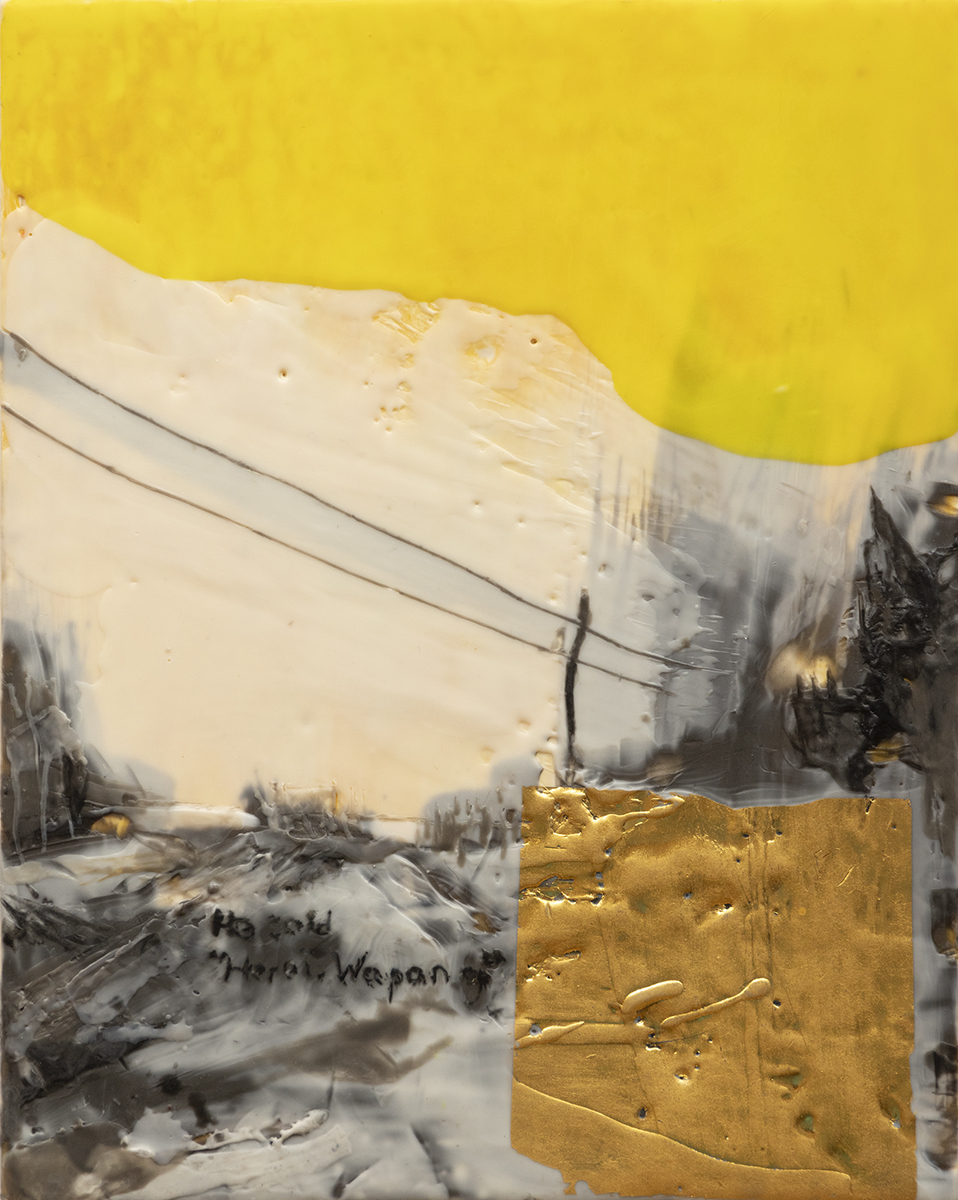
Tim Schouten, He said, “here is Wapang”, 2016.
Oil, pigment, microcrystalline wax, beeswax, dammar resin,
gold leaf on birch panel, 10 x 8 inches.
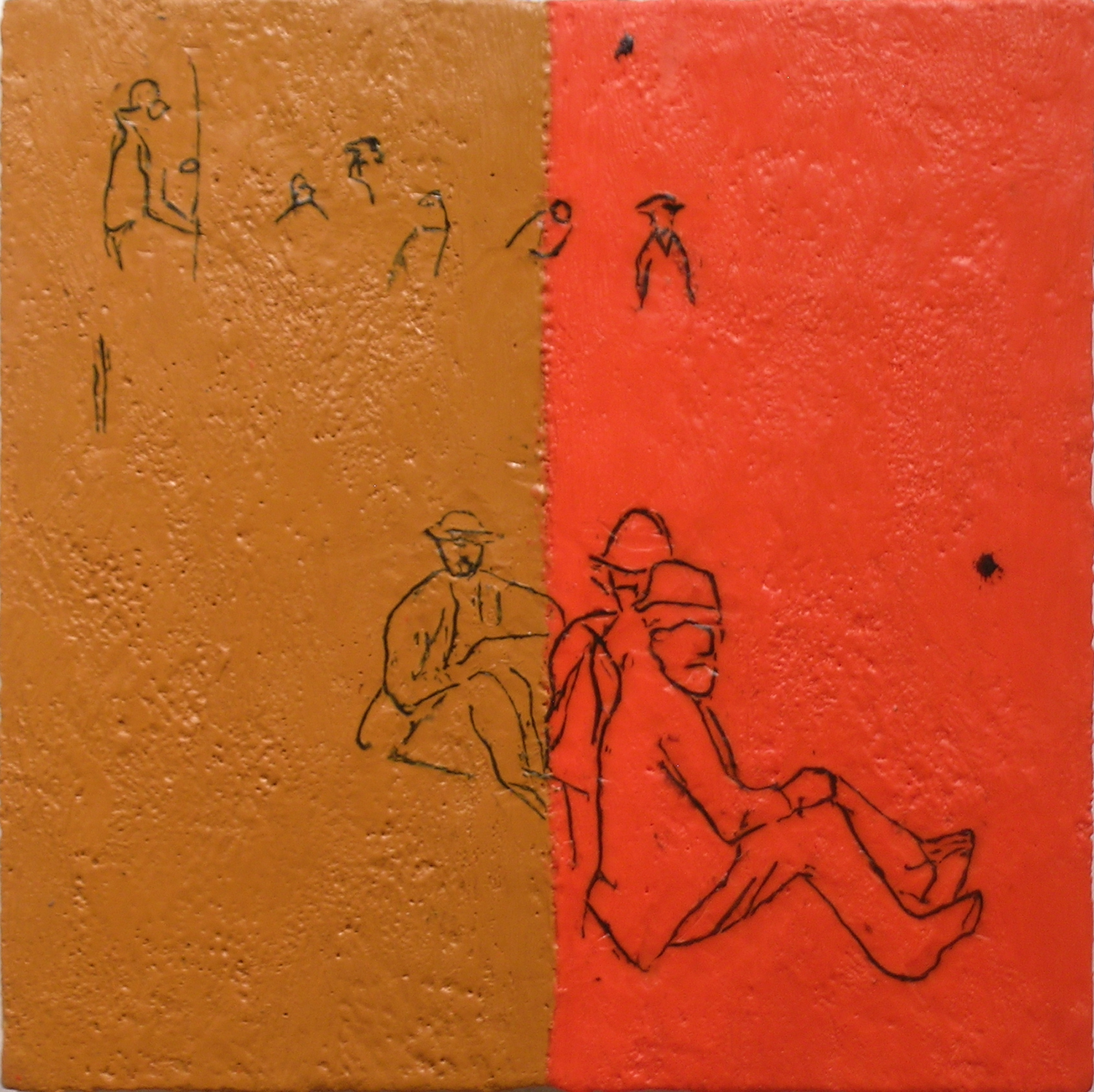
Tim Schouten, Height of Land, 2017.
Oil, pigment, microcrystalline wax, beeswax, dammar resin on birch panel, 16 x 16 inches.
Presented in partnership with the
Consulate General of Canada in Minneapolis.
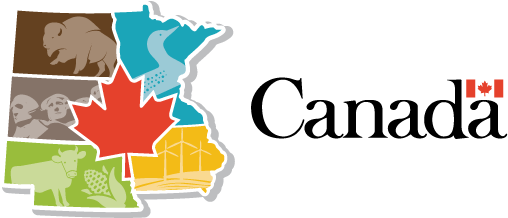
Individual Sponsors
$500 and above
Martin Brown
Anonymous
$100 and above
Ann Braaten
Luise Beringer
Anonymous
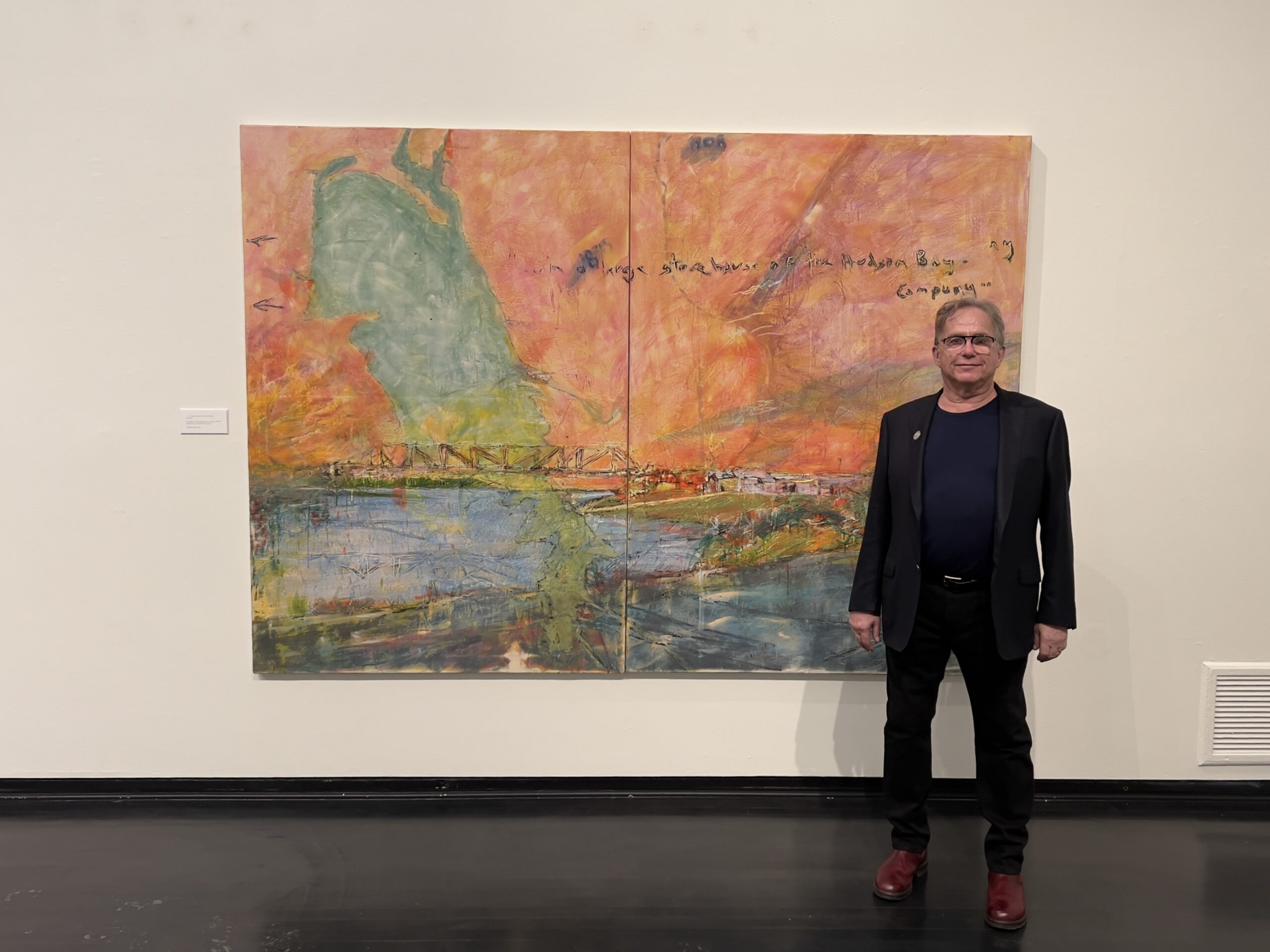
Artist Tim Schouten in front of …in a large storehouse of the Hudson Bay Company…
